Giovanni Boccaccio began to write his Black Death novel The Decameron in the late 1340s.My reading in the late 1950s left a lifelong impression. COVID-19 refreshed my interest in pandemics. This 1913 Italian postcard celebrates the sixth centenary of Boccaccio’s birth in 1313 in Certaldo, a small village near Florence, Italy.
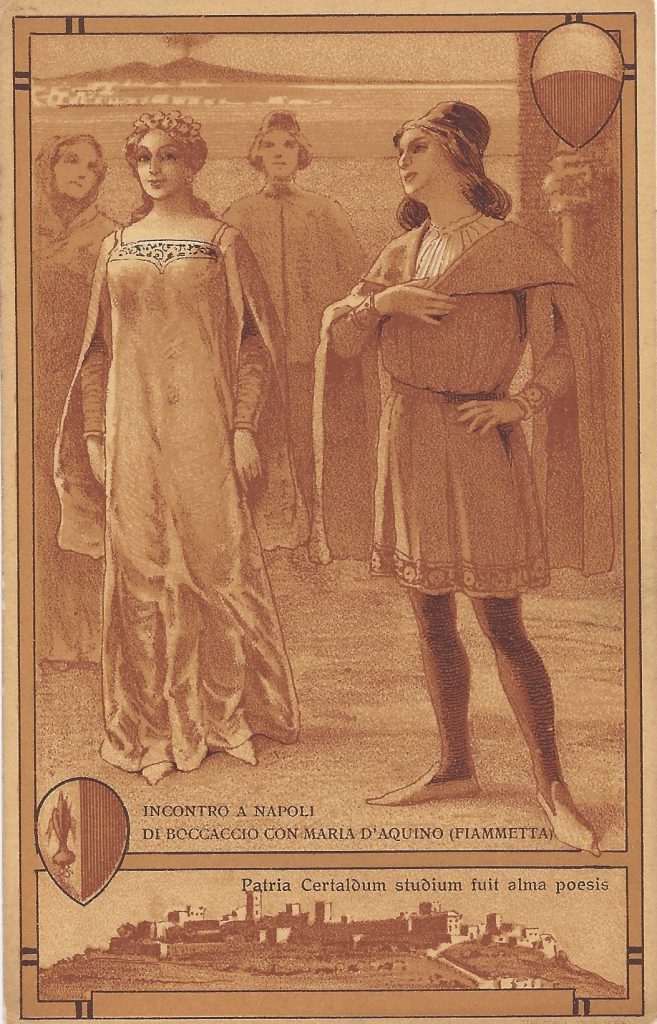
The three phases of the 1918 Influenza epidemic appeared at different times and different places between January 1918 and 1920. In the United States the devastating second wave, October-November 1918, occurred as the war was coming to an end.
The Delta variant of COVID-19 reminds us of nature’s unpredictability and our vulnerability. The centenary of the catastrophic 1918 influenza revived interest in pandemics. Postcards provided a voice for ‘regular folk,’ a term borrowed from American Holiday Postcards, 1905-1915 by Daniel Gifford. Senders with a postcard and two cents for postage shared flu experiences with friends and relatives.
Country doctor Loring Miner reported influenza in January 1918 in Haskell County, Kansas. It is unclear whether the influenza started in Kansas, France, or China, but certainly it was not in Spain. Public health officials initially downplayed the flu’s severity but soon called for masks, closing schools, churches, saloons, restricted travel, and enforced quarantine. Some egregious mask-slackers were prosecuted, fined, or imprisoned. The flu filled newspapers with sad stories.
In early February the words “ill, sick, feeling bad, and flu” started appearing in postcard messages. October-November reported the merciless second wave. December saw some tapering off.
On February 9th, Frank wrote from Tacoma, Washington to Albany, Oregon, “Dear Auntie, how did you enjoy the flu. It is some flu ha.” They would not be laughing long.
Frederick N. Funston (1865-1917) Major General in the U.S. Army received the Medal of Honor for service in the Spanish-American and the Philippine-American Wars. His name adorned two military establishments, Fort Funston, Harbor Defense Installation in San Francisco in 1900, and Camp Funston in Fort Riley, Kansas, in 1917. Camp Funston may have been the early epidemic epicenter.
Mama wrote on this postcard, cancelled February 22, 1918, at Junction City, Kansas, thirteen miles from Funston to Mrs. Helen Wherry in Danville, Illinois:
Hello How are you … Tod comes over to see me every day. He just left – say he is sure happy as a king to think he is getting well. Tell Josephine there is a sweet little girl here.
She is sick. Now vaccination. Mama
The epidemic reached its apex during October when 195,000 died.
Messages included “Dear Mother, Amusements closed because of the ‘Flu’.”
“Dear Friend Claude, I am having a fine time but cannot go south on account of the ‘Flu’.”
“Dear pappa and mamma, I am still in the hospital…”
“Dear Gladys, The flu has been very bad here, but is decreasing now.”
Will at Camp Dodge, Iowa, wrote to Corp. Victor A. Read in the Army Expeditionary Forces in France on October 12 that he saw John who was laid up in the hospital with pneumonia. “Can’t tell how it may turn out yet. He is feeling better today. Mother is going to stay here for a week or so. The camp is quarantined. I’m not going to expect the worst anyway.”
Halloween is popular for wearing masks, dressing as goblins and witches, and carving scary pumpkins. On October 11, Edith in Waterford, Pennsylvania wrote on a Halloween card to Florence in Clay, New York, “Hope you have escaped this dreadful disease. The schools etc have been closed a week. We are both well now.”
Americans sent colorful Thanksgiving greetings. “Dear Cousin, Everybody is well now but Aunt Liz was sick when I came up.”
A Third grader wrote in large letters “My dear friend, We are all well. Hope this will find you the same. We haven’t got the fleu [sic] yet.”
Alice in Bristol, Iowa, wrote to Franklin, New Hampshire, November 27; Dear Eva, The influenza about the same. Aunt Mamie was a little better yesterday but James and Gertrude also Donald have got it. Mr. Peasley and Healey and the Joudro family are the only ones up our way so far that have it.
On November 29, George Weber in Staten Island wrote in German to Ardie in the Bronx 38 miles away, Liebe Ardie – Habe gehort das du krank warst. Hoffe das du wieder gesund bist, George Weber. Translated – “Dear Ardie. Have heard that you were sick. Hope you are better.”
President Wilson’s Thanksgiving Proclamation invoking God four times praised the righteous Allied Victory but had not a word about influenza. The President would catch the flu in Paris.
Christmas greetings were subdued. “Dear Brother, I had been sick so I couldn’t ans your letter … wishing you a merry Xmas.”
“Dear Coz, We are all pretty well. Mother and I were planning to start for Mo last night and they have the flu down there so bad they wrote us not to come at present.”
“Dear Mother, My cold is no better but am still doctoring it … one of the fellows of my company is almost dead with the ‘flu’.”
“Dear one all. We are all well but sorry to hear Ella had the flu. Hope she is better by this time.”
Christmas Eve, Mother wrote “Dear Oscar, Hope this finds you well. I am just getting over the Flu. We have been sick for two weeks.”
Ushering in 1919 brought further greetings. Althea in Connoquesnessing, Pennsylvania wrote to Mrs. Milton Gray in Salem, Ohio, on December 29,
“Dear Aunt, How I do wish you people could come and visit us … Sister Dale has been very sick but is some better.”
J. E. Peck in Newton Center, Massachusetts wrote a New Year’s Eve greeting on December 31 to J.J. Young in Saco, Maine, “Although I said I would be in New Year’ Day, I cannot resist the temptation to stay another day. Will report for duty Friday. All the schools are closed around here. “Flu”
Messages and images carrying flu missives reveal inconvenience, disruption, cessation of travel, closing of schools and worse. They were silent on the war’s progress, victory, and Armistice.
Despite chaos they remained cautious, optimistic, even joking, taking events in their stride.
By 1919 some 675,000 America’s died, and 50 million more worldwide. In the second decade of the 20th century there were newspapers and the U.S. Post Office. A hundred years later our communication infrastructure added radio, television, the internet, email, and expanding digital services.
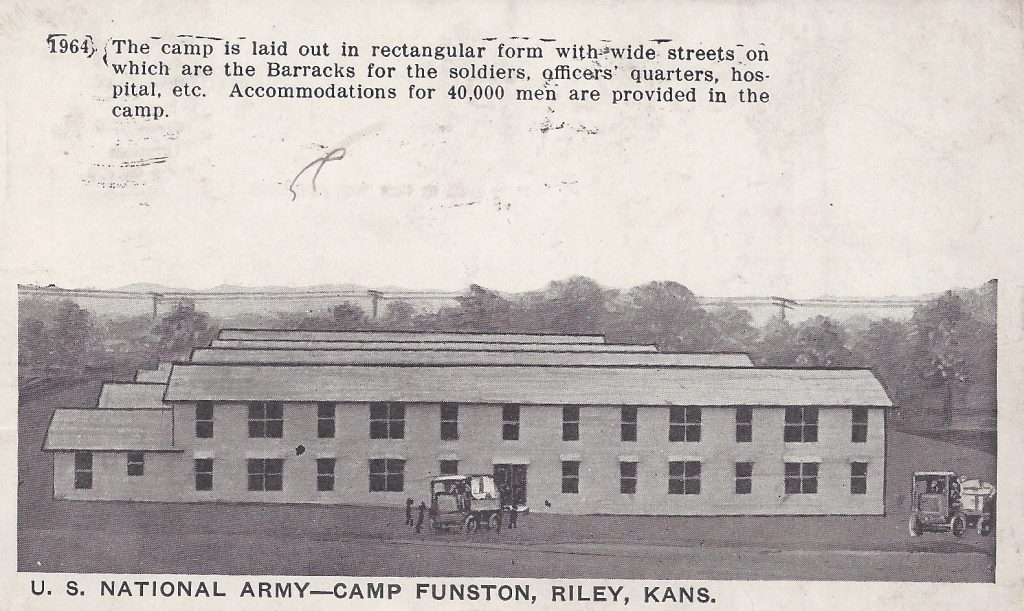
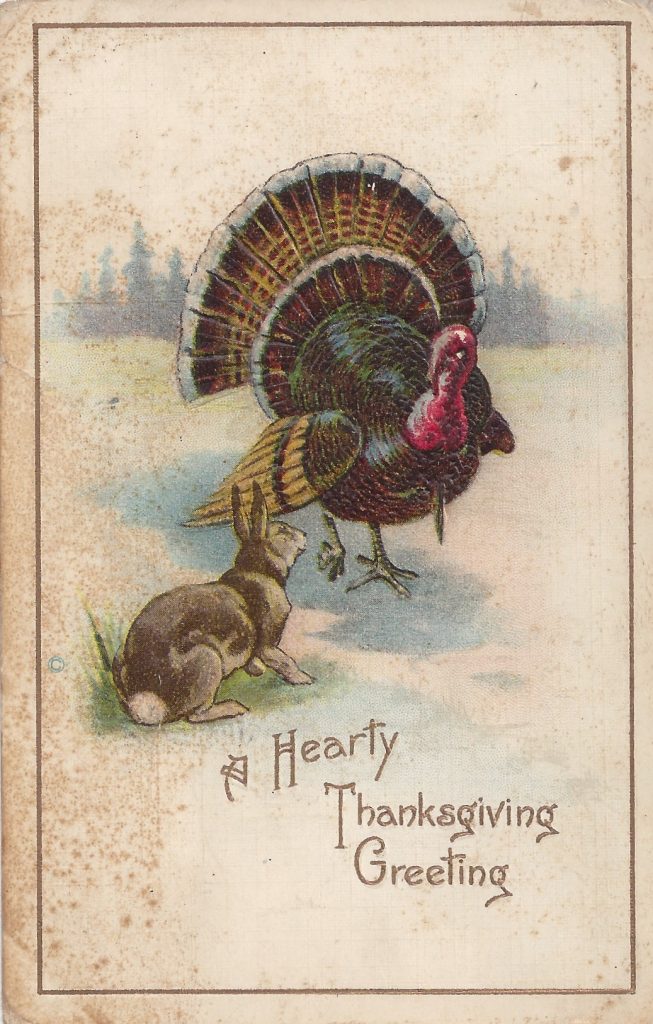
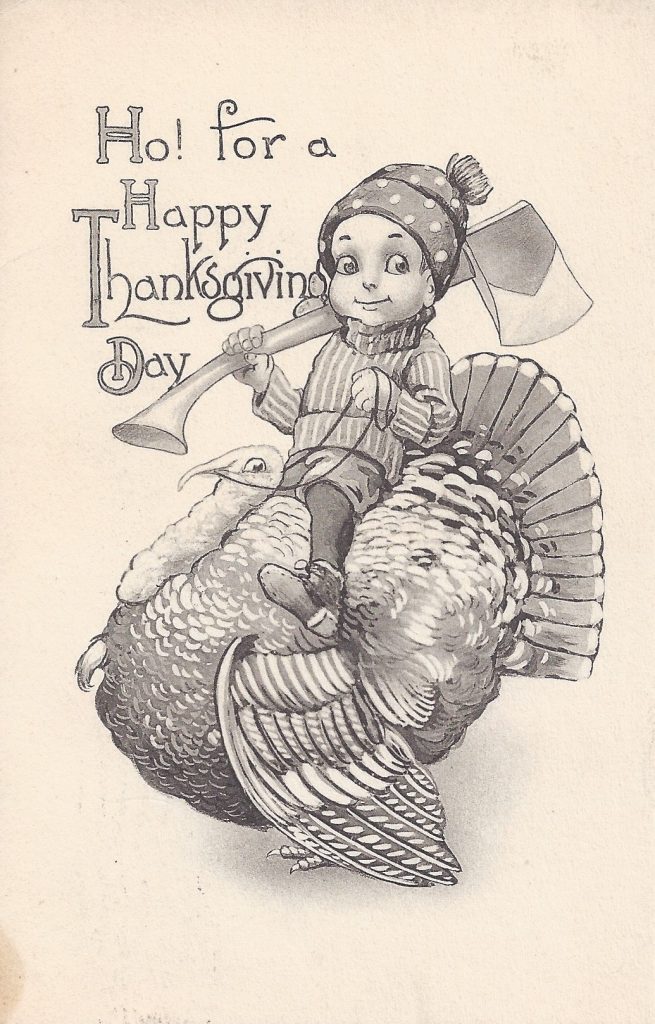
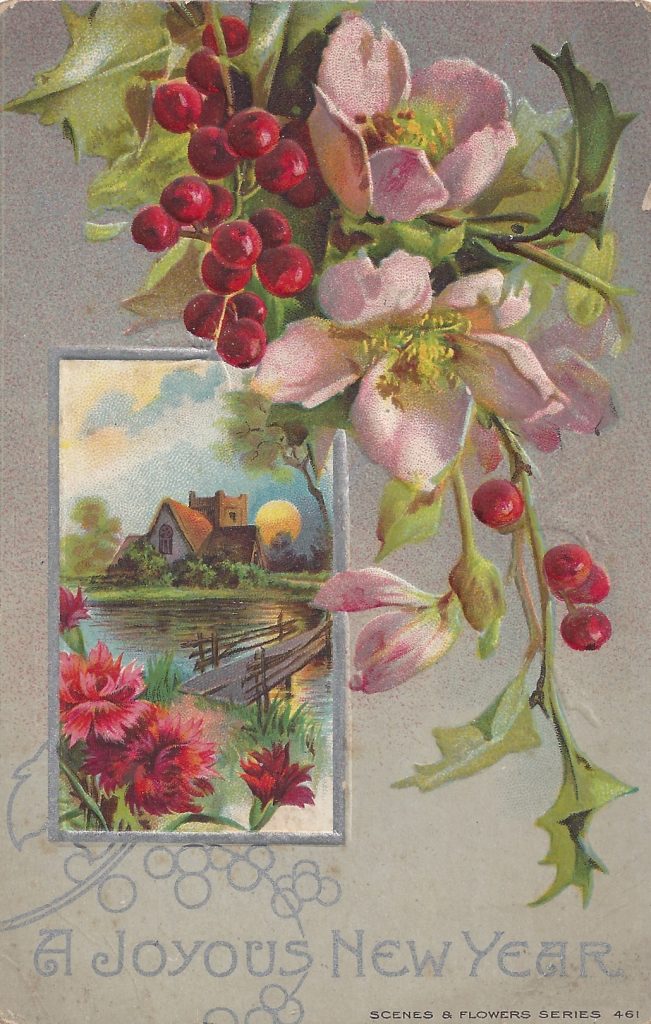
Certainly a fine example of history repeating. Anti-maskers then and now. Failure to learn from history now. When did health measures become political?
Such a compelling story – even without the Internet!
Fascinating perspective on communications, virus spread and impressions. Amazing insights into the parallels in human attitudes then and now.
So interesting, and so relevant to our times!
More evidence that the messages on postcards are often more interesting than the images.